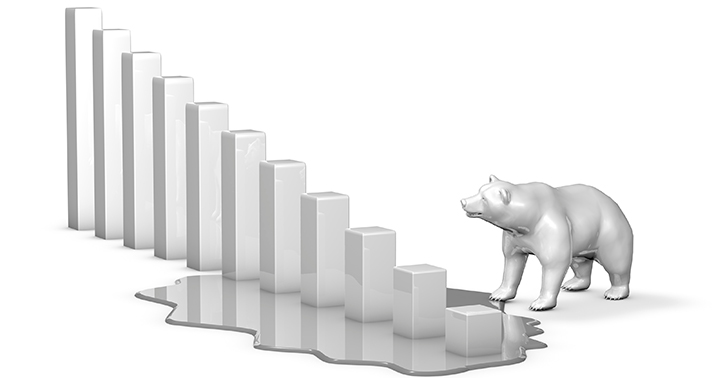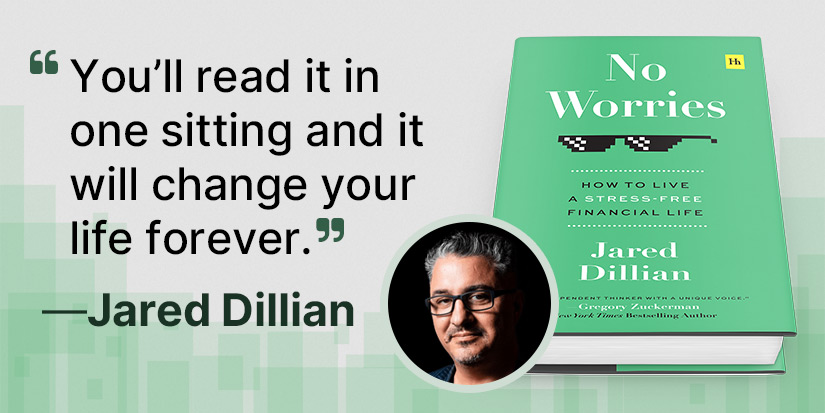
What a Correction Feels Like
-
 Jared Dillian
Jared Dillian
- |
- October 16, 2014
- |
- Comments
The market had been acting funny for a while, and I had a hunch that there was going to be trouble while I was gone, so I bought the 30 strike calls in the CBOE Market Volatility Index (VIX). I was betting that volatility was going to go up a lot in a short period of time. In fact, these options—which I spent a little over $100,000 on—would be worthless unless there was outright panic. I gave instructions to my colleagues to sell the call options if the VIX went over 35. (Note: my memory on the details of the trade, like the strike of the options and the level of the VIX, is a little hazy. The specifics might have been different, but you get the general idea.)
So there I was, sunning myself at this primitive resort on Cat Island and the world was melting down, and I was completely oblivious to what was going on back on Wall Street. Coincidentally, the local Bahamas newspaper had a picture of black swans on the cover one day. I staged a photo of me in a hammock reading the newspaper with the black swans on it. I still have that photo.
I got back to civilization and checked the markets. I saw the chart of the VIX. I could hardly contain myself. If my colleagues had executed the trades properly, I would have had a profit of over $800,000. But when I got back to work and opened my spreadsheet, I found that I’d made less than $100,000. What I had failed to consider was that if the world actually was blowing up, the guys would have been too busy to execute my trade.
So there is this whole idea of state dependence that we have to consider when we’re talking about the market. Like, you might have a plan to buy stocks when the index gets below a certain level, but when the market gets to that point, you: a) may not have the capital; and b) might be panicking into your shorts. It’s nice to have a plan, but, paraphrasing Mike Tyson, everyone has a plan until they get punched in the face.
I remember reading Russell Napier’s book about bear markets, called Anatomy of the Bear. It talked about all the big bear markets in the US, including the granddaddy of them all, the stock market crash of 1929 and the Great Depression. One of the things that I learned from this book was that if you can time the bottom exactly right, you can make a hell of a lot of money in very short order. For example, if you had bought the lows in 1932, you could have doubled your money in a matter of months.
I wanted to do that. I prayed for a bear market, so I would get my chance.
Little did I know that I would get my chance just two years later—and blow it.
When the market is down 60%, it’s scary as hell to buy stocks. Hindsight being 20/20, you can say, “What, did you think it was going to zero?” Actually, yes—in March of 2009, people thought it was going to zero.
But for those people who: a) had capital; and b) weren’t terrified, it was a once-in-a-lifetime opportunity.
A Thousand Days with No Correction
So let’s talk about a). Does everybody have capital? Remember, the hard part of this is not picking bottoms. Many people can do this quite capably. Panic/liquidation is very easy to spot. But few people have the ability to take advantage of it, because they’re fully invested.
As for b), you tend not to be terrified if you have capital.
Everyone knows by now that the stock market is correcting. The price action is pretty terrible. Will it get worse? I think so. We’re seeing excesses (corporate credit, growth stocks, IPOs) that we haven’t seen in many, many years. It’s been over 1,000 days since we’ve had a correction of any magnitude. With the market down about 5%, nobody is particularly worried, because every other time the market was down 5%, it ended up going higher.
Back to state dependence. What is it going to feel like if the market goes down further? How will people behave if the S&P 500 gets to, say, 1,700?
I can tell you what it will be like if the S&P gets to 1,700. It’s going to be like it was in August of 2007 when my coworkers forgot to sell my VIX calls because they were buried under an avalanche of panicked sell orders from institutional money managers. Pre-algorithmic trading, the trading floor used to get pretty noisy. I used to be able to tell you what the market was doing just from listening to the floor. At SPX 1,700, trading floors will be very noisy.
It’s been so long since we’ve had a correction, I’m guessing that most people have forgotten what a correction feels like. When you go that long in between corrections, people are sitting on a mountain of capital gains. And unless the capital gains really start to disappear, there is little pressure to sell. But if you’re the owner of, say, airline stocks, and you’ve watched them evaporate to the tune of 30%, that tends to focus the mind a little bit.
Like what you're reading?
Get this free newsletter in your inbox every Thursday! Read our privacy policy here.
subscribers@mauldineconomics.com
Tags
Suggested Reading...
|
|

 Jared Dillian
Jared Dillian

